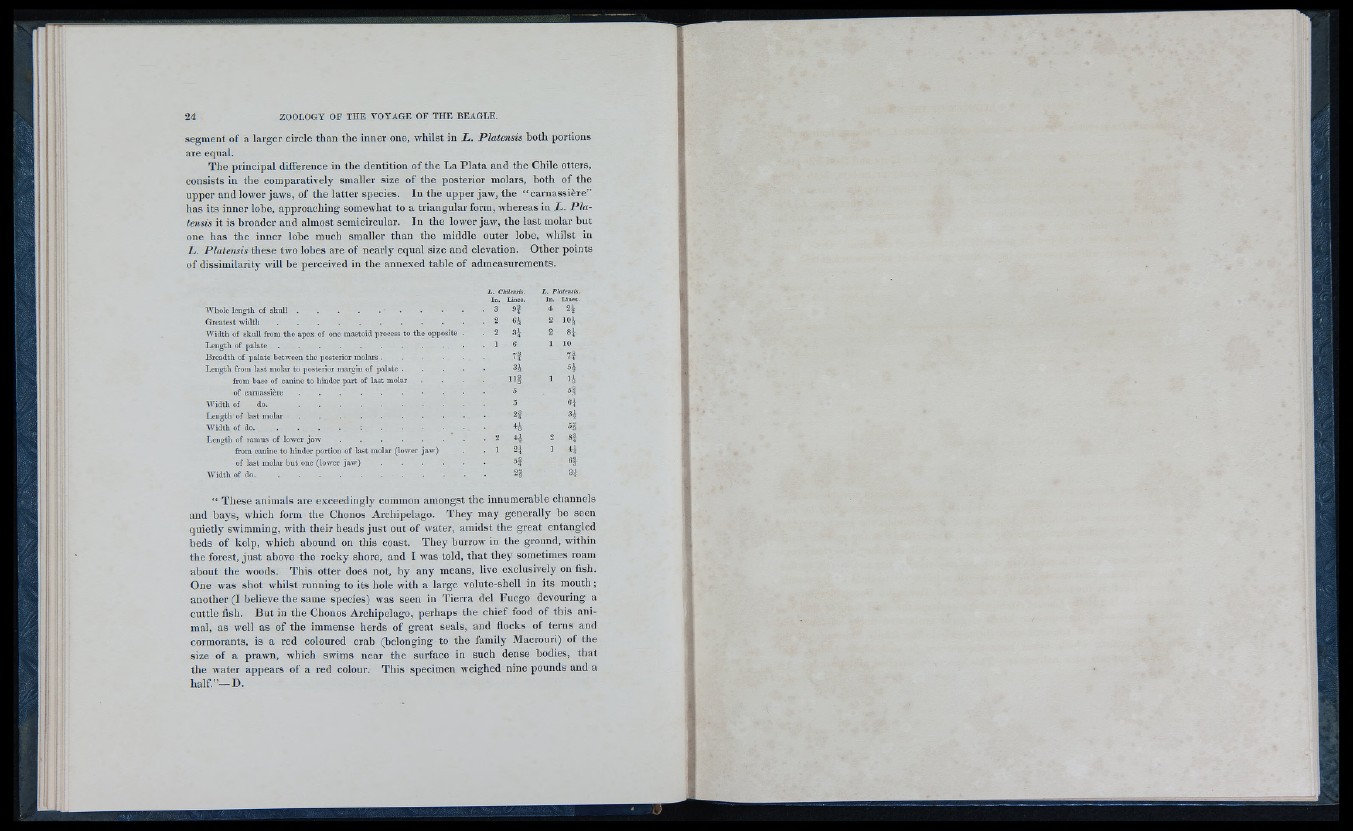
segment of a larger circle than the inner one, whilst in L . Platensis both portions
are equal.
The principal difference in the dentition of the La Plata and the Chile otters,
consists in the comparatively smaller size of the posterior molars, both of the
upper and lower jaws, of the latter species. In the upper jaw, the “ carnassière”
has its inner lobe, approaching somewhat to a triangular form, whereas in L . P latensis
it is broader and almost semicircular. In the lower jaw, the last molar but
one has the inner lobe much smaller than the middle outer lobe, whilst in
L . Platensis these two lobes are of nearly equal size and elevation. Other points
of dissimilarity will be perceived in the annexed table of admeasurements.
Whole length of skull . . . . . . . . .
Greatest % v i d t h ....................................................................................................
W idth of skull from the apex of one mastoid process to the opposite .
Length of p a l a t e ....................................................................................................
B readth of palate between the posterior molars . . . . ■
Length from last molar to posterior margin of palate . . . ■
from base of canine to hinder part of last molar
of c a r n a s s i è r e .........................................................................................
W idth of do. . . . . . . . .
Length of last inolar . . . . . . . .
W idth of do.
Length of ramus of lower jaw . . . . . .
from canine to hinder portion of last molar (lower jaw)
of last molar b u t one (lower j a w ) ............................................
W idth of do. . . . . . . . . .
L . Chilensis. L . Platensis.
Id.. Lines. In, Lines.
. 3 9 j 4
. 2 6 J 2 1 0 |
. 2 3 i 2 8i
1 e 1 10
n 7Î
3 J H
I I I 1 U
5 5 |
5 6i
3i
5 |
2 8Î
■ 1 H 1 *i
5Î n
n H
“ These animals are exceedingly common amongst the innumerable channels
and bays, which form the Chonos Archipelago. They may generally be seen
quietly swimming, with their heads just out of water, amidst the great entangled
beds of kelp, which abound on this coast. They burrow in the ground, within
the forest, just above the rocky shore, and I was told, that they sometimes roam
about the woods. This otter does not, by any means, live exclusively on fish.
One w'as shot whilst running to its hole with a large volute-shell in its mouth;
another (I believe the same species) was seen in Tierra del Fuego devouring a
cuttle fish. But in the Chonos Archipelago, perhaps the chief food of this animal,
as well as of the immense herds of great seals, and flocks of terns and
cormorants, is a red coloured crab (belonging to the family Macrouri) of the
size of a prawn, which swims near the surface in such dense bodies, that
the water appears of a red colour. This specimen weighed nine pounds and a
half.”— D.